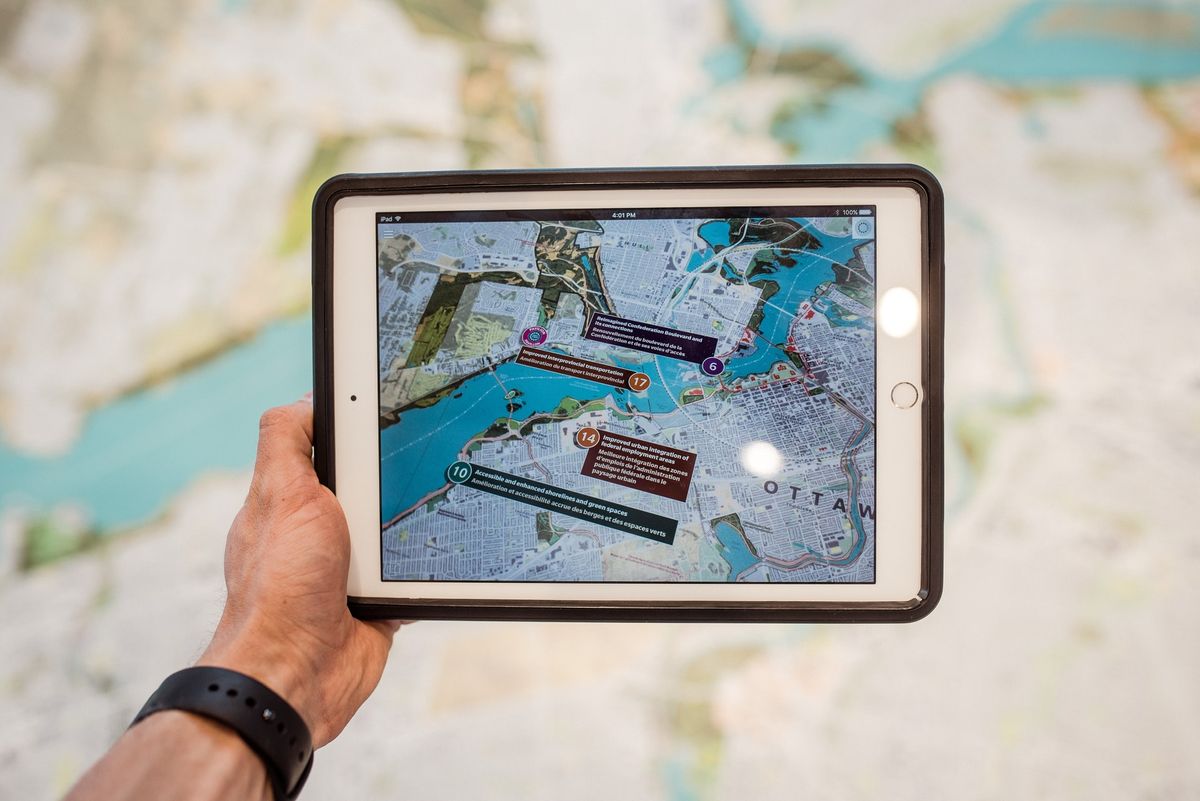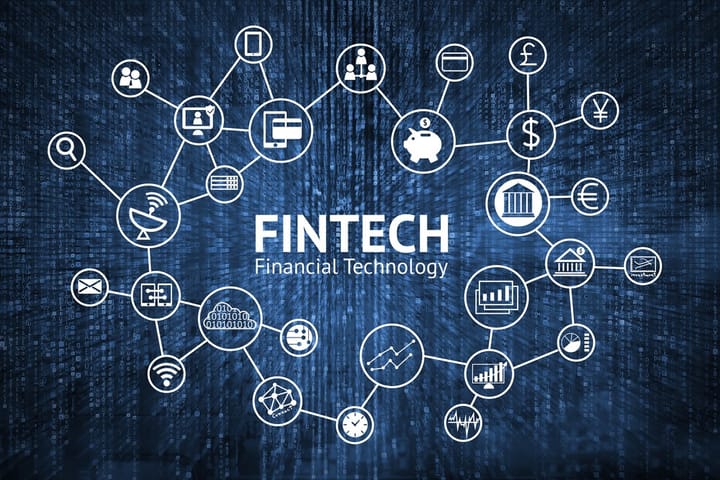Augmented Reality is Revolutionizing Fintech and Payments Industry
Augmented Reality is an innovation that has a potential to revolutionize payments industry by immersing customers with different sorts of content and empower them to interact with it, thus, boosting customer experience and engagement.

Augmented Reality is a fascinating technological buzzword that has inspired the whole world. The Science Fiction world is already working on this technology and the phenomenon has been shown thousands of times in movies creation. The Matrix movie is an exceptional example where people live in a virtually created environment powered by artificial intelligence.
Read also: The Future of Finance
Augmented Reality (AR) visualizes the actual physical world in real-time, which is then improved by digital information. Virtual Reality (VR) creates an intimated world that is not physically present. Mixed Reality (MR) combines the effects of both Augmented Reality and Virtual Reality. It helps users to see real and virtual objects in a single display. Those who are familiar with gaming, the field of VR is continuously flourishing in the market with the success of Pokemon Go game (users interact with their surroundings without any boundaries) and Snapchat (apply filters to faces in real-time). It's not only used in gaming industry or social media but also supporting Digital Transformation and Fintech.
AR and VR are already very much part of the world and now ready to revolutionize the payment industry. It is an innovation that has potential to immerse customers with different sorts of content and empower them to interact with it. It has become a demanding technology as customer need the next level of comfort in business in the form of a smartphone app. Fintech, which is already aimed towards boosting user experience and better engagement will surely jump to next level when combined with AR.
Augmented Reality Credit Cards
Read also: Top 10 Artificial Intelligence Trends for 2021
Augmented Reality – An Overview
It is expected that Augmented Reality will create a market of $120 billion in the year 2020 that will bring significant improvements in the Fintech Industry. It helped Fintech companies and traditional banks to compete for their daily challenges like:
- Automatic scanning of real estate objects
- Doing mortgage calculations
- Customer service
- Data Analysis
- Accessing Complex Information
AR started spreading in various industries because of its increased convenience and high financial benefits. According to Statista, the global market of VR will raise to $192.7 billion in year 2022 from $14.1 billion (calculated in 2017). Moreover, it will be used for purposes other than entertainment and fun in future. Fintech companies are incorporating VR in their businesses to develop outstanding solutions. Augmented Reality is something quite different from Virtual Reality and Mixed Reality.
Augmented Reality (AR)
The basic theme of AR is to improve Reality with computer-based content known as Computer-Generated (CG) content. QR Code Scanning Tool is the most common application of AR as the device identifies the patterns of code written on the products. Then it provides information that is encoded in the QR code or open links on the browsers. Another perfect example of Augmented Reality is Iron Man Movie that offers a heads-up helmet. It comes with the capability to add details about locked-on objects. The given technology has the potential to do something beyond entertainment.
Virtual Reality (VR)
The best practice of VR is its use in Boeing, an aerospace industry; it uses CRSV (Constant Resolution Visual System). It shows a flying experience when the pilot is not in an Aeroplan but on the ground.
Mixed Reality (MR)
Microsoft Holographic Headset Device well shows the phenomenon of mixed Reality. It can map the user's room and shows holograms with the surrounding environment of the room. It’s the best fit to play Minecraft.
How Augmented Reality Solutions Benefit Fintech Industry?
AR is a multi-billion market and can lead Fintech industrialists to the next level than their competitors who are not familiar with it. However, it's still in its early stages of development and will become more advanced with time. There are lots of other factors that make Augmented Reality the soul of Fintech industry. One of the most exciting facets of Augmented Reality is how it enables customers to make correct financial decisions by integrating relevant financial information in their day to day life.
AR has created exciting success opportunities and payment processing companies are foreseeing huge potential by integrating AR into customer experience and various other areas of business operations.
Given below are Top 10 Augmented Reality Uses in Fintech and Payment Industry
1. Personalized Customer Service
To battle the danger of losing considerably more clients to digital channels, bank branches should take an extreme move in their look and feel. Banks are looking more for advisory jobs instead of sales reps in order to create trust worthy, commendable and emotional relationship with customers.
Augmented Reality in the finance sector is committed to providing advanced personalized customer services. It allows banks and Fintech companies to develop a Finance App to facilitate their targeted audience. It saves times by delivering sharing enhanced information than in real-world by showing elements of different surroundings. The interface it provides is straightforward to understand and contains every aspect of detailed information.
Moreover, many Financial Institutes, like banks, have also introduced AR & VR apps for improving customer experience. They also offer help clients to find their nearest bank branch for emergency ATM services. At a specific location, customers can scan their areas to see real-time information like about that particular place. Even now, clients can monitor their homes on smartphones or tablets via real estate mobile applications. It helps to get enough information about their property in real-time at one place; advanced apps will show mortgage calculators and 3-dimensional interior details in the AR surrounding.
Salesforce Augmented Reality Customer Experience
2. Virtual Reality Payments and Better Retail Environment
Visa, a payment industry giant has introduced an augmented reality payment mobile app that uses VR technology to open 3D map on the screen and provide user an exciting way of selecting the outlet and choosing the item of interest and then payment processing without leaving VR world. This innovation has taken customer retail experience to another level. Watch the video
Augmented Reality Payment with Visa
MasterCard joined hands with Wearability to provide virtual buying experience to their customers. Now they can buy things in a virtually created environment. Priceless is the use of VR in golf where players buy their clothing online in the virtual world.
In the field of Fintech, Augmented Reality is boosting customer’s e-commerce and shopping experience. It uses either headsets or cameras of smartphones and guides users to the nearest retail store. For example, it helps the users to find the best store near them which offer discounts for shopping. The app also comes with specific filters to find out a particular product and its relevant information.
3. Ease of Data Visualization and Assessment
With the rapid growth in Fintech, it is becoming a complicated process to deal with big data and availability of information in real time. VR, along with AR, has solutions for all problems; thus, help in deciding in real-time as it provide all relevant information as augmented data visualization while customer is still in virtual world. Using AR, all relevant information can be provided to customer efficiently during the VR experience by rendering it in real-time using visualizations.
Augmented Reality Banking Design Concepts (UXDA)
Salesforce renowned as a leader in CRM uses Oculus Rift to analyze data by creating an immersive 3D area around the user. AR also deals with experimental projects in healthcare, where paramedics and surgeon use a device to visualize the patient's internal body parts. Besides, it tells about the patient's previous condition in real-time. The chances of making the right decisions about timely treatment by the doctors are increased with VR and AR devices
4. Enhanced Banking Experience
It is an exciting time for financial services industry. VR and AR gave banks and other financial service providers an opportunity to pick up piece of the overall industry with millennials and future generations. VR and AR are offering new ways to reach millennials. The Australian bank Westpac is releasing an augmented reality app for mobile devices. The app provides 3D visualization of account information and transaction history. Brick-And-Mortar bank has enhanced branch with augmented reality.
The most useful application of AR in banking and Fintech is its struggle to provide a better user experience. There are AR-supported maps for locating the nearest ATMs. In detail, technology comes with a camera that involves scanning the near-by area. Then it finds matching machine spots which are closest to the user. It shows the collected information on the screen after full scanning, which is enough for customer satisfaction.
Commerzbank, the second largest bank is Germany, is the first commercial bank to open a virtual branch called LiveBank. Customer survey reports that top benefit of LiveBank is that it has restored the personal, face-to-face interaction to some extent which got lost with the transition to internet and mobile banking.
5. Virtual Trading
Some organizations are busy in developing virtual reality workstation for trading purposes. A practical example of virtual trading is Microsoft HoloLens that provides holographic workstations. The idea is to provide useful trading tools and information in augmented reality while sitting on physical workstation doing day to day tasks. While glancing in a holographic space, it is easy to see and access a dynamic 3D visual snapshot of what is happening in the market at the moment. User can easily view high volume activity and initiate a possible trade transaction. With embedded voice recognition system and natural language processing (NLP), user can command and instruct computer for a particular action. User can then look at inbuilt augmented data visualization to perform further data analysis while collaborating with his teammates.
Comarch, a Poland based IT company, uses VR in wealth management software; it allows users to understand algorithms and other trading tools better.
Citi HoloLens Holographic Workstation
6. Higher Security
Similar to Blockchain in Fintech, Augmented Reality is also involved in providing security to the industry. It uses Biometric Authentications to make it safer for customers to access their bank privacies. Furthermore, it makes payments and ATP transactions secure even from home.
Augmented reality can also be utilized when it comes to secure document verification while on boarding a new customer for an account creation. Below video explains customer journey from downloading the mobile app, account creation and usage.
Augmented Reality and Secure Data Processing (IDEMIA)
7. Virtual Branches
It is an application of VR in the Banking industry that will eliminate the need for physical banks; thus, it also saves money. It’s an exciting and obliging experience from customer perspective as there might be some reasons when customers couldn't go to their banks for solving a particular query. Virtual branches help them to get information and aid from relevant person in real-time but in a virtual environment. It’s a beneficial step for both customers and the bank owners in saving time and reducing expenses.
Union Bank Virtual Branch
8. Real-time Meetings
The technology has changed the way of starting or joining meetings via virtual reality assistance. Users open the app on their smartphones and then wear AR headsets. It makes them feel all the meeting members are present in the same room and sharing their thoughts about a topic under discussion. VR enhanced the comfort for bankers, employers, and users to attend virtual meetings while staying at home.
Virtual Reality Business Meetings (MeetinVR)
9. Immersed Financial Education
The education of an updated financial system is vital for both employees and employers to understand its new terms. AR and VR share enough knowledge about managing financial expense and getting high productivity. It helps the users to connect and also to encounter a specific business situation. The technology provides suggestions for what to expect for a particular business system in use.
VR gives a vivid learning experience to teach youngsters about cash. Showing kids how to spare, put away and oversee cash and how to settle on savvy budgetary choices much more viable with augmented reality.
10. Faster Recruitment and Training
Financial institutions should be sure about their recruiting and hiring processes that they are introducing the right talent to their team. Some banks use VR technology to make their system highly up to date and innovative for recruiting the top talent. Current employees and potential employees use the same platform for developing teams and in return, developing apps to support their customers.
VR also helps companies to recruit persons from any part of the world, ignoring their physical presence at the time of interview. Thus, it eliminates the chances of losing a job for potential candidates because of time and effort issues. It makes hiring system simple by sharing unique situations with the candidates and observes their dealing with them. The same approach is also in use for promoting a deserving employee to the next level.
Wrapping Up
These are the ways where Augmented Reality is supporting Fintech Industry exceptionally. As technology growth and advancement is unstoppable, so, let's wait for more exciting opportunities. Don't sit silently after incorporating VR in some of the systems but keep exploring new ways and techniques related to VR technology.
AR with VR can enhance customer experiences in fintech. The technology has the potential to optimize processes, permit designers to draw sketches in real-time via virtual meetings. Moreover, it will produce tools for complex data analysis, data visualization, and to perform other fantastic tasks in less time than required.
Cheers :)


